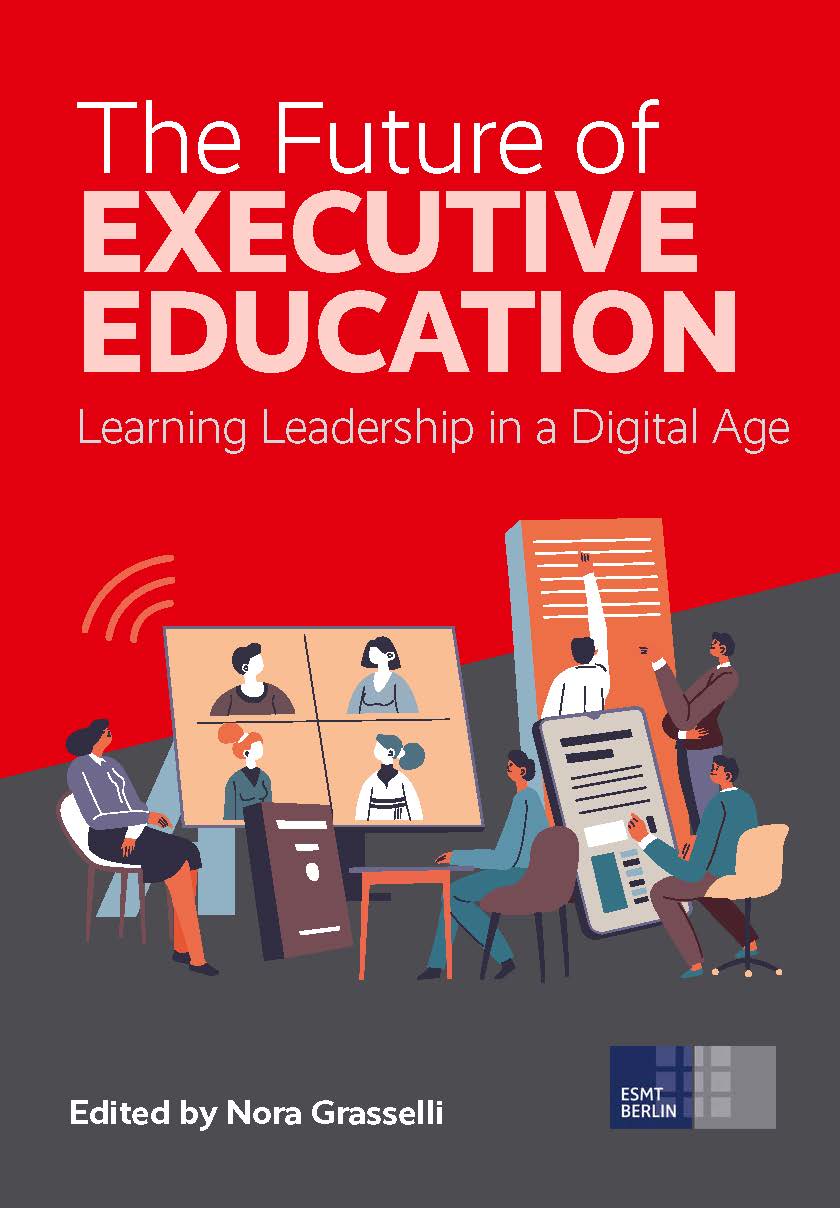Academic articles
Practitioner articles
Working papers
Books
Book chapters
Case studies
Other publications
Subject(s)
Human resources management/organizational behavior
Keyword(s)
executive learning, leadership, learning innovation, executive education
JEL Code(s)
M12, M53
Digital transformation, accelerated by the COVID pandemic, resulted in major changes for the executive classroom. We had to reinvent, digitalize, redesign, and reframe ways of learning for leaders. In many cases the changes needed to be implemented from one day to the other.
This bookazine, a professional book with the look-and-feel of a magazine, brings together executive education faculty, practitioners, and learning specialists to depict tried and tested practices of learning for leaders. The changing learning needs of modern leaders in combination with the diverse expertise of the authors represent a fascinating set of practice examples which advance the future of executive education.
The result is a collection of inspiring and innovative learning practices that is of keen interest to executive education faculty and specialists, leadership development experts, as well as learners who will shape and be shaped by future executive education programs.
This bookazine, a professional book with the look-and-feel of a magazine, brings together executive education faculty, practitioners, and learning specialists to depict tried and tested practices of learning for leaders. The changing learning needs of modern leaders in combination with the diverse expertise of the authors represent a fascinating set of practice examples which advance the future of executive education.
The result is a collection of inspiring and innovative learning practices that is of keen interest to executive education faculty and specialists, leadership development experts, as well as learners who will shape and be shaped by future executive education programs.
Pages
89
ISBN
978-3-00-074213-2
ISBN (Online)
978-3-00-074214-9
Subject(s)
Human resources management/organizational behavior
Keyword(s)
leadership, global virtual teams, remote work, virtual communication
JEL Code(s)
M12, M53
How are team dynamics affected by our evermore global and virtualized business context? This innovative, escape-room-styled game, christened in 2019 (rather prophetically) “The Virus” pits executives against imagined cyber criminals. In just 30 minutes, the players must work together and pool their resources to discover clues, solve puzzles, and accomplish tasks in order to stop the cyber attack. The catch? Not everyone is in the same room. Unlike most classic team building challenges, the game does not grant players the luxury of all looking at the same visual or numerical data. Instead, the executives are split into three teams (or “local offices”), each receiving different parts of the puzzle via the in-game app. To succeed, the players must rise to the challenge of sharing this rich contextual information via videoconferencing only. “The Virus” reveals lessons learned for virtual and hybrid collaboration..
View the book “Grasselli, N. (Ed.) (2023). The future of executive education. Learning leadership in a digital age” here.
Secondary Title
The future of executive education. Learning leadership in a digital age
Pages
43–52
ISBN
978-3-00-074213-2
ISBN (Online)
978-3-00-074214-9
Subject(s)
Economics, politics and business environment
Keyword(s)
efficiency, benchmarking, performance, regulation,data envelopment analysis, stochastic frontier analysis, total factor productivity, market structure
ISBN
978-3-031-20339-8
Subject(s)
Human resources management/organizational behavior
Keyword(s)
career reinvention, career investments, career divestments
Secondary Title
Understanding careers around the globe: Stories and sourcebook
Pages
56–63
ISBN
978 1 03530 840 8
Subject(s)
Economics, politics and business environment; Ethics and social responsibility; Finance, accounting and corporate governance
Keyword(s)
green finance; ESG goals; climate policy
Volume
74
Journal Pages
1–19
ISSN (Online)
2366-035X
Subject(s)
Economics, politics and business environment
Keyword(s)
internal labor markets, organization of labor, wage setting
JEL Code(s)
J31, J62, M5
This paper develops a new method to study how workers’ career and wage profiles are shaped by internal labor markets (ILM) and job hierarchies in firms. We tackle the conceptual challenge of organizing jobs within firms into hierarchy levels by proposing a data-driven ranking method based on observed worker flows between occupations within firms. We apply our method to linked employer–employee data from Norway that record fine-grained occupational codes and track contract changes within firms. Our findings confirm existing evidence that is primarily based on case studies for single firms. We expand on this by documenting substantial heterogeneity in the structure and hierarchy of ILMs across a broad range of large firms. Our findings on wage and promotion dynamics in ILMs are consistent with models of careers in organizations.
Volume
233
Journal Pages
661–688
Subject(s)
Economics, politics and business environment; Strategy and general management; Technology, R&D management
Keyword(s)
bundling, tying, competition, innovation, cloud computing
JEL Code(s)
K21, L12, L41
Pages
6
Journal Pages
211–216
Subject(s)
Marketing; Strategy and general management; Technology, R&D management
Keyword(s)
solid growth, strategic challenges, strategic options for corporate development, advanced premium goods, no-frills, complex service solutions, global industrial companies, global markets, innovative business models, corporate structures in times of deglobalization, hidden champions
ISBN
978-981-126-451-1
ISBN (Online)
978-981-126-453-5
Subject(s)
Human resources management/organizational behavior
Keyword(s)
dyadic knowledge transfer, ERGM, mental model, (mis)alignment, perceptions
Secondary Title
Understanding workplace relationships: An examination of the antecedents and outcomes
Edition
1st ed.,
ISBN
9783031166396
Subject(s)
Human resources management/organizational behavior
Keyword(s)
dyadic knowledge transfer, ERGM, mental model, (mis)alignment, perceptions
Secondary Title
Understanding workplace relationships: An examination of the antecedents and outcomes
Edition
1st ed.,
ISBN
9783031166396

